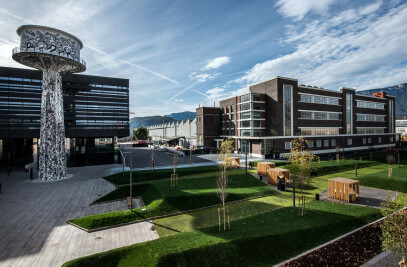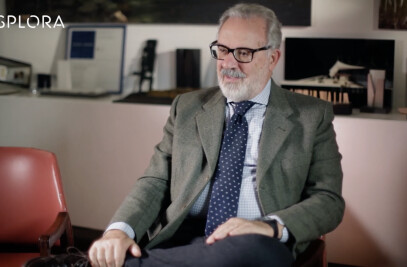In the lesson starring architect Carlo Ratti, director of the MIT Senseable City Lab and founder of Carlo Ratti Associati studio, a precise idea of architecture emerges that moves from the "will to start from the present to try to change it", a way of understanding the project – a derivation from Anglo-Saxon models - which intends the project as a tool to modify and make the future better.
Going through the biography of architect Ratti you can trace the itinerary that led to the construction of this idea, different experiences, straddling the disciplines: engineering studies both at the Polytechnic of Turin and at the École des Ponts et Chaussées in Paris, and also architecture and computer science studies first at Cambridge and then at MIT in Boston.
His education is based on the continuous confrontation with the world and its demands, the project as a "way of life", where different disciplines converge and where encounters with significant experienced figures take on importance: from engineer Michel Virlogeux, great designer of bridges and "extreme" structures, to teachers at MIT such as the computer scientist Nicholas Negroponte or the founder of the Fab lab, Neil Gershenfeld.
The idea that takes shape is that of the unity of learning, the idea of the "college" as a fundamental structure for connecting both the knowledge and the different disciplinary contributions through the "network" concept. The lesson then highlights the aims of architecture that "cannot disregard the knowledge of the environment”, meaning that designing should start from what is there, from the data that become a tool to advance hypotheses and make proposals in continuous comparison with people, the citizens.
Watch Carlo Ratti's ArchiTALKS
A modus operandi that materializes in the projects of Carlo Ratti Associati (CRA) studio, as well as in those of the Senseable City Laboratory and also in the startups started from research and experimentation. Starting from the work on the big data, carried out by the laboratory at MIT, the lesson highlights the proposals for a new mobility. This is the case of "HubCab" where - starting from the data on New York taxis - efficient ways of sharing taxis that would lead to the reduction of traffic are imagined, but also the "Roboat" system for the city of Amsterdam where autonomous boats will allow moving people, creating new flexible and dynamic conformations.
Not only our way of moving will change, but there will also be the opportunity of getting to know better the human and city microbiome: in this direction goes the "Underworlds" project which, starting from the study of viruses and bacteria, intends to provide us with information on urban health. Data and sensors are the basis of the Trash Track project that studies waste routes, providing not only information that could be useful to improve the collection and disposal chain but becoming also reason for people’s change, for their way of acting.
A work on the data and experimentation that permeates the intense activity of CRA studio, as in the projects for the great events, as of EXPO from Zaragoza (2008) Dubai (2020) passing through Milan (2015). Pavilions that become an opportunity for “speculative design” occasion to think and build different worlds in a short time, from the dynamic water walls of the Digital Water Pavilion in Zaragoza to the supermarket of the future of Milan (Future Food District) where technology is the tool to interact with people and give information about the products, up to the "circular" project for the Italian pavilion in Dubai developed with Italo Rota. Projects on the "skin" of the building that becomes "responsive" as in the case of the Agnelli Foundation in Turin.
Collaboration and invention led Carlo Ratti to develop startups that propose vertical plotters (SCRIBIT) or robotics systems to be applied to cycling in the cities of the world (Superpedestrian). If the "network" is changing the world we live in, architecture will have to change too, opening up to debate and other disciplines, intersecting and hybridizing themes, giving value to nature and bringing it back into the building, opening up to inclusive systems and to collaborative processes.
































